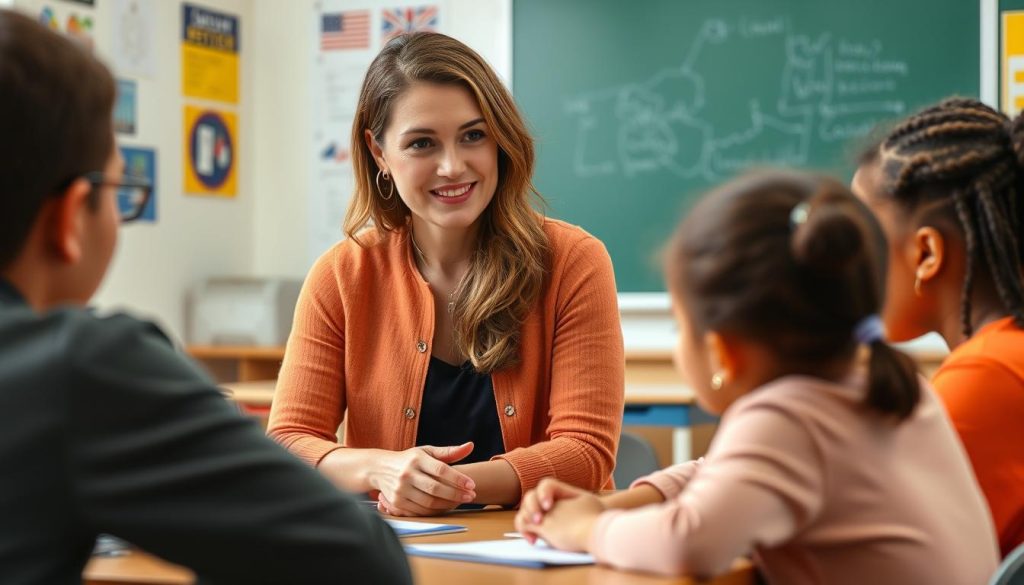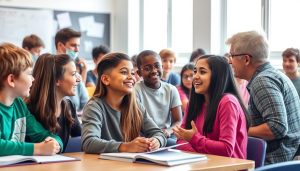In this comprehensive guide, we’ll explore research-backed best practices for classroom discipline that respect student dignity while effectively addressing behavioral challenges. Whether you’re a new teacher developing foundational teacher skills or a veteran educator looking to refine your approach, these strategies will help you create a more harmonious, productive classroom environment.
Understanding the Foundation of Best Practices in Equitable Discipline
Before diving into specific strategies, it’s essential to understand what makes discipline both fair and effective. According to research from the National Association of School Psychologists, equitable discipline approaches recognize that student behavior is influenced by multiple factors including development, culture, and individual needs.
The foundation of best practices in discipline begins with a shift in perspective. Rather than viewing discipline as punishment for misbehavior, effective educators approach it as an opportunity to teach appropriate behavior and social-emotional skills. This fundamental shift transforms discipline from a reactive process to a proactive learning experience.
Developing these teacher skills requires understanding three core principles:
- Consistency with flexibility – applying rules uniformly while considering individual circumstances
- Relationship-centered approaches – building trust as the foundation for behavioral influence
- Cultural responsiveness – recognizing how cultural backgrounds shape behavioral expectations
A 2014 study published in the Journal of School Psychology found that teachers who implemented these principles saw a 31% reduction in disruptive behaviors compared to traditional punitive approaches.
Implementing these best practices doesn’t happen overnight. It requires intentional development of specific teacher skills and a commitment to ongoing learning. Professional development opportunities can significantly accelerate this growth, providing structured guidance for refining your discipline approach.
Proactive Classroom Management Best Practices
The most effective discipline strategies prevent problems before they occur. Proactive classroom management best practices create an environment where students understand expectations, feel supported, and are engaged in meaningful learning.
Establish Clear Expectations
One of the foundational teacher skills is the ability to clearly communicate behavioral expectations. Research consistently shows that students are more likely to meet expectations when they understand them.
- Co-create classroom rules with students to increase buy-in
- Frame expectations positively (what to do vs. what not to do)
- Provide specific examples of expected behaviors
- Revisit and reinforce expectations regularly
When students participate in establishing expectations, they develop a sense of ownership and responsibility for classroom culture.
Design Engaging Instruction
Perhaps surprisingly, one of the most effective discipline strategies is simply engaging instruction. When students are actively involved in meaningful learning, disruptive behavior naturally decreases.
Best practices for creating engaging instruction include:
- Incorporating student interests and cultural backgrounds
- Providing appropriate levels of challenge
- Using varied instructional approaches
- Building in opportunities for movement and collaboration
- Offering authentic choices within structured activities
These instructional teacher skills directly impact classroom management by addressing the root cause of many behavioral issues: disengagement.
Establish Predictable Routines
Predictable routines create a sense of security and reduce anxiety, particularly for students who may struggle with transitions or uncertainty.
Effective routines include:
- Consistent arrival and dismissal procedures
- Clear transitions between activities
- Visual schedules and timers
- Established procedures for common activities (turning in work, getting materials, etc.)
The time invested in teaching and reinforcing these routines pays dividends in reduced disruptions and increased learning time.
Looking to enhance your teacher skills in proactive classroom management? Our Effective Discipline course provides comprehensive strategies for creating a positive classroom environment where discipline issues are prevented before they begin.
Responsive Intervention Best Practices
Even with excellent proactive strategies, behavioral challenges will arise. How educators respond in these moments significantly impacts both the immediate situation and long-term student behavior. Best practices for responsive interventions focus on maintaining student dignity while effectively addressing the behavior.
The Hierarchy of Responses
Effective teachers develop a repertoire of responses that match the intensity of the behavior. This graduated approach is among the most important teacher skills for maintaining classroom harmony.
| Behavior Level | Example Behaviors | Appropriate Responses |
| Minor | Off-task, talking out of turn, not following directions | Nonverbal cues, proximity, gentle reminders |
| Moderate | Repeated minor behaviors, disrupting others, refusal | Redirection, brief private conversation, logical consequences |
| Serious | Aggression, property destruction, ongoing defiance | Removal from situation, problem-solving conference, behavior plan |
Research indicates that most behavioral issues can be resolved with low-level interventions when applied consistently and promptly.
Restorative Practices
Restorative practices represent one of the most significant shifts in discipline best practices in recent years. Rather than focusing solely on consequences, restorative approaches emphasize:
- Repairing harm caused by behavior
- Rebuilding relationships
- Reintegrating students into the classroom community

A 2018 study of restorative practices in a large urban school district found that schools implementing these approaches saw a 44% reduction in suspensions and improved school climate measures.
Developing teacher skills in restorative practices includes learning to:
- Facilitate restorative conversations
- Ask questions that promote reflection and empathy
- Guide students in making amends
- Balance accountability with support
De-escalation Techniques
When emotions run high, de-escalation becomes a critical teacher skill. Best practices for de-escalation include:
- Maintaining a calm, neutral tone and body language
- Providing space (physical and emotional)
- Using simple, clear language
- Offering choices when possible
- Avoiding power struggles
These techniques help prevent minor situations from escalating into major disruptions while preserving student dignity.
Building Relationships and Community Best Practices
The foundation of effective discipline isn’t found in clever consequences or management systems—it’s built on relationships. Research consistently shows that students are more likely to meet expectations and respond positively to correction when they feel connected to their teachers.
Relationship-Building Strategies
Developing strong teacher-student relationships requires intentional effort and specific teacher skills:
- Greeting students by name daily
- Learning about students’ interests and experiences
- Sharing appropriate personal connections
- Attending extracurricular events
- Creating opportunities for positive interactions
- Maintaining a 5:1 ratio of positive to corrective feedback
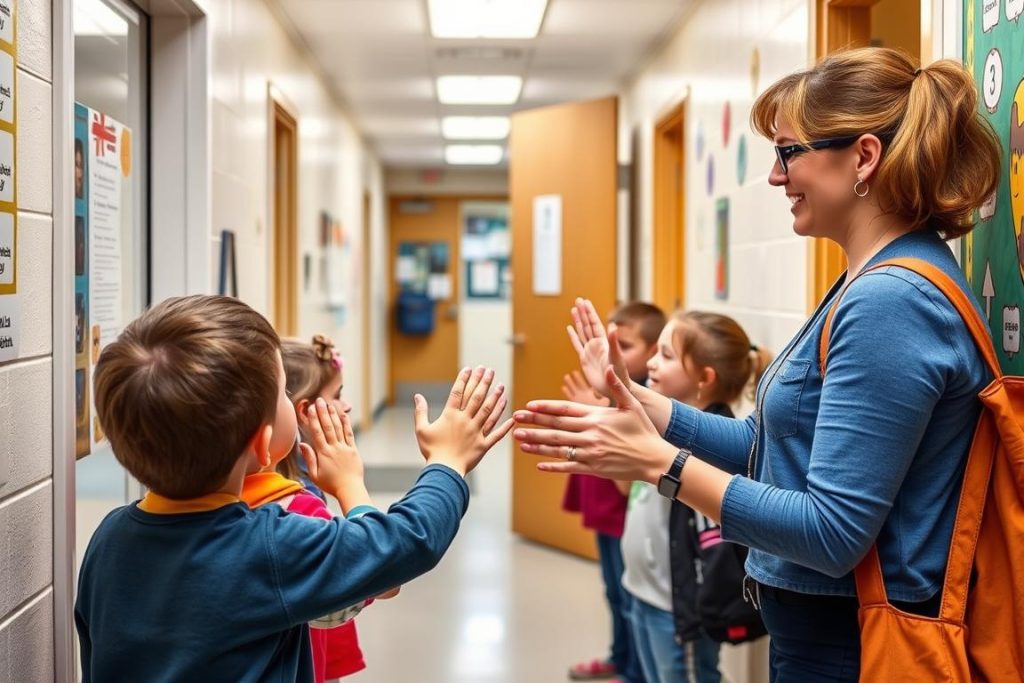
A meta-analysis of 99 studies found that strong teacher-student relationships were associated with reductions in disruptive behavior and increases in cooperation and academic engagement.
Creating Classroom Community
Beyond individual relationships, best practices in discipline include fostering a sense of community where students feel they belong and are invested in the collective well-being.
Effective community-building strategies include:
- Regular class meetings to discuss issues and celebrate successes
- Collaborative problem-solving for classroom challenges
- Service projects that benefit the school or wider community
- Shared classroom responsibilities
- Recognition of diverse contributions and strengths
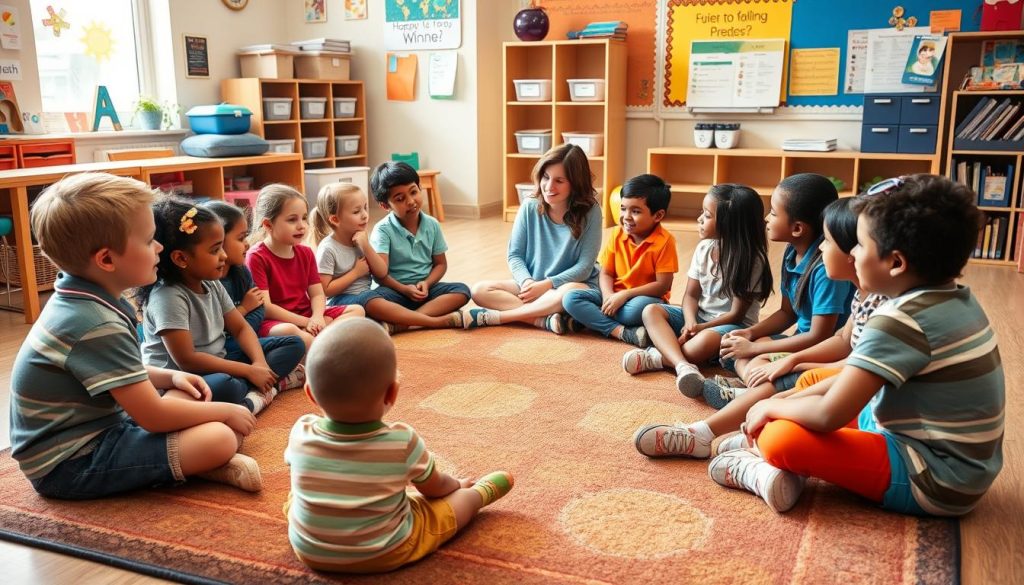
These practices help students develop a sense of belonging and responsibility that naturally reduces behavioral issues while teaching essential social skills.
Enhance Your Classroom Management Skills
Looking for more in-depth strategies for building positive relationships and classroom community? Our comprehensive course provides practical tools you can implement immediately.
Cultural Responsiveness in Discipline Best Practices
One of the most critical aspects of fair discipline is cultural responsiveness. Research consistently shows disparities in discipline outcomes based on race, gender, disability status, and other factors. Best practices in equitable discipline actively address these disparities.
Understanding Cultural Influences
Developing teacher skills in cultural responsiveness begins with understanding how culture shapes behavior, communication, and expectations. For example:
- Eye contact norms vary significantly across cultures
- Acceptable volume and animation in conversation differs by cultural background
- Attitudes toward authority and questioning may be culturally influenced
- Communication styles (direct vs. indirect) have cultural dimensions
When educators misinterpret culturally influenced behaviors as defiance or disrespect, inequitable discipline often results.
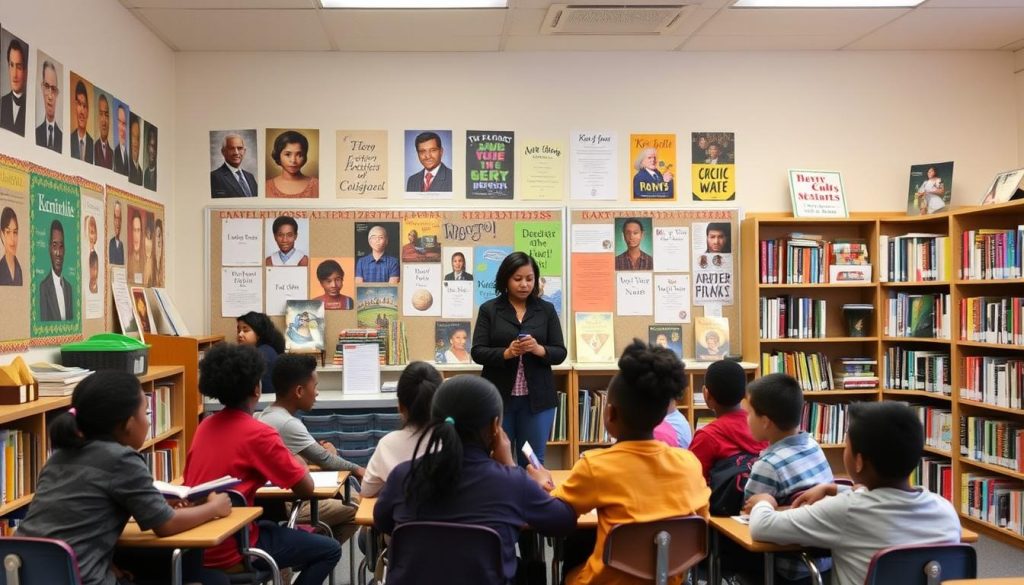
Examining Bias in Discipline
Best practices in equitable discipline include regular self-reflection and data analysis to identify potential bias. This requires developing specific teacher skills:
- Tracking discipline referrals by demographic groups
- Reflecting on personal triggers and reactions
- Seeking feedback from colleagues and diverse families
- Implementing checks and balances in discipline decisions
This ongoing examination helps educators ensure their discipline practices are truly fair and effective for all students.
Culturally Responsive Strategies
Culturally responsive discipline strategies include:
- Building authentic relationships with all students and families
- Incorporating diverse perspectives and examples in instruction
- Providing multiple ways for students to demonstrate respect
- Using a problem-solving approach rather than a compliance model
- Engaging families as partners in understanding and addressing behavior
These approaches recognize that effective discipline must be responsive to the unique backgrounds and needs of each student while maintaining high expectations for all.
Professional Development and Teacher Skills Enhancement for Discipline Best Practices
Implementing best practices in classroom discipline is an ongoing journey that requires continuous learning and refinement of teacher skills. Professional development plays a crucial role in this process.
Essential Teacher Skills for Effective Discipline
Research identifies several key teacher skills that contribute to effective discipline:
- Emotional regulation and stress management
- Clear and assertive communication
- Cultural competence and bias awareness
- Conflict resolution and mediation
- Data collection and analysis
- Relationship-building across differences
- Restorative practices facilitation
- Trauma-informed response
- Collaborative problem-solving
- Self-reflection and adaptation
Developing these teacher skills requires intentional practice, feedback, and ongoing learning opportunities.
Professional Learning Communities
One of the most effective approaches to developing discipline-related teacher skills is participation in professional learning communities (PLCs). These collaborative groups allow educators to:
- Share successful strategies and challenges
- Analyze discipline data together
- Observe and provide feedback to one another
- Study research and best practices
- Develop shared approaches to common challenges
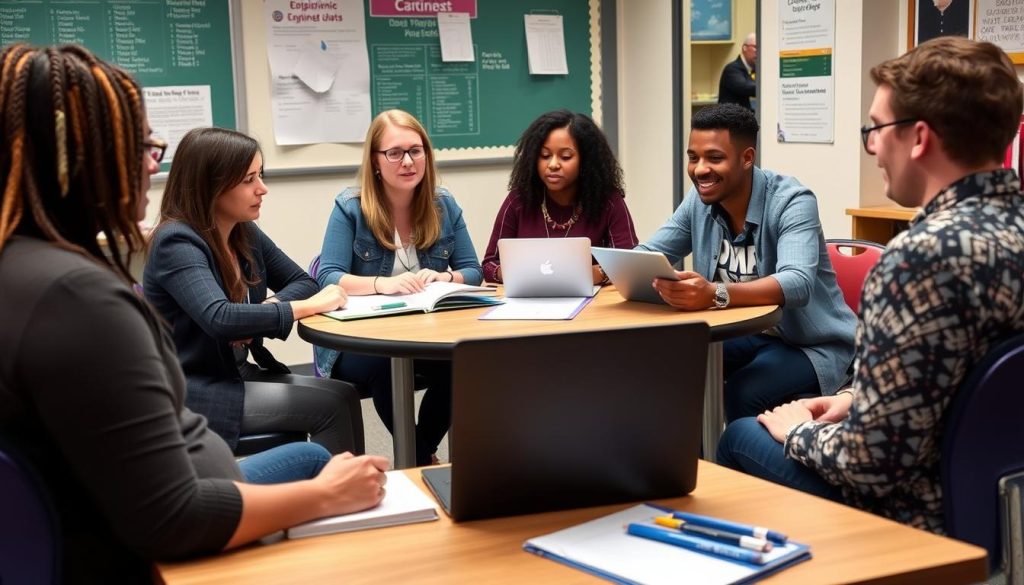
PLCs provide both accountability and support for implementing new approaches to discipline.
Structured Professional Development
In addition to collaborative learning, structured professional development opportunities can accelerate growth in discipline-related teacher skills. Effective professional development:
- Provides research-based strategies with clear rationales
- Includes opportunities to practice new skills
- Offers coaching and feedback
- Addresses the specific context and needs of participants
- Includes follow-up support for implementation
Quality professional development resources can transform discipline approaches across an entire school or district by building a shared understanding and consistent implementation of best practices.
Ready to Transform Your Approach to Classroom Discipline?
Our comprehensive Effective Discipline course provides research-based strategies, practical tools, and ongoing support to help you implement fair and effective discipline practices in your classroom.
- Evidence-based approaches to preventing and addressing behavior challenges
- Culturally responsive discipline strategies
- Tools for building strong classroom relationships and community
- Practical techniques for de-escalation and restorative practices
Conclusion: Implementing Discipline Best Practices in Your Classroom
Creating a classroom where discipline is both fair and effective is a complex but achievable goal. By implementing the best practices we’ve explored—from proactive classroom management to responsive interventions, relationship building, cultural responsiveness, and ongoing professional development—you can create an environment where students thrive behaviorally and academically.
Remember that developing these teacher skills is an ongoing journey. Start by selecting one or two strategies to implement consistently, then gradually expand your approach as these become part of your practice. Seek feedback from colleagues, students, and families, and be willing to adapt your approach based on what you learn.
Most importantly, be patient with yourself and your students. Meaningful change in discipline approaches takes time, but the results—improved relationships, increased learning time, and students who develop self-regulation and social skills—are well worth the effort.
For additional support in developing your teacher skills and implementing these best practices, explore the professional development resources available through Credits for Teachers. Together, we can create classrooms where all students experience discipline that is both fair and effective.

